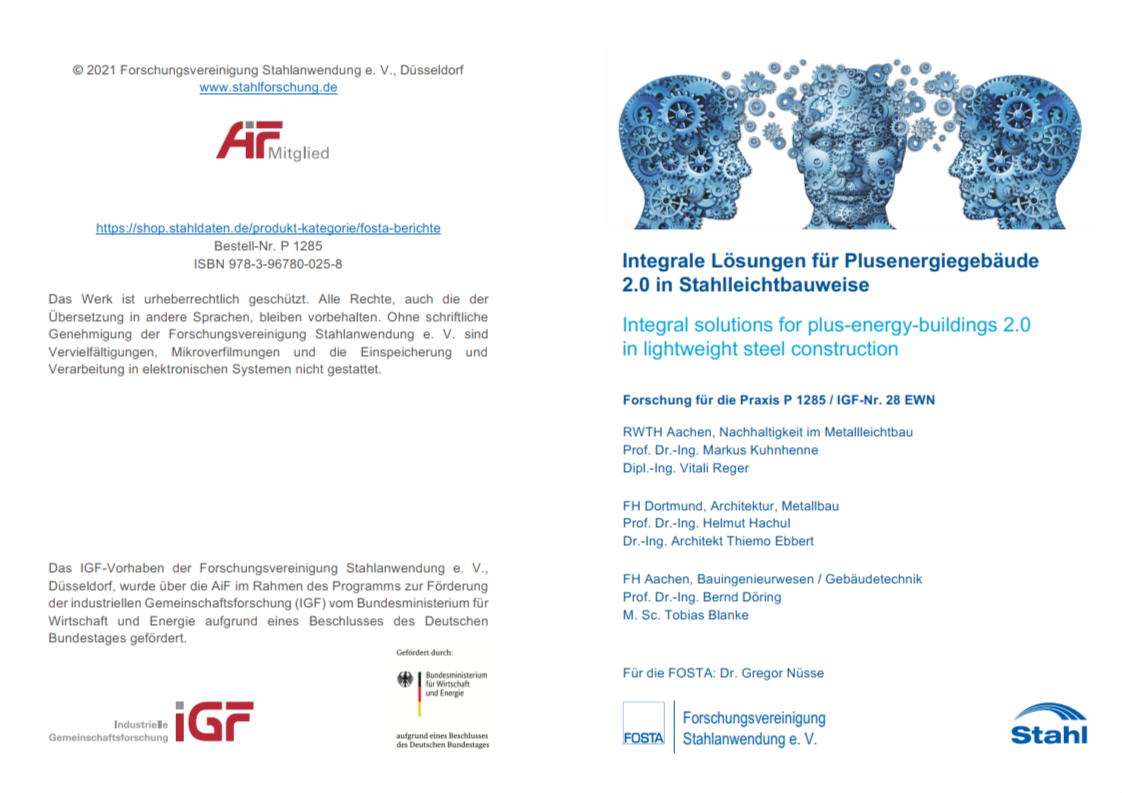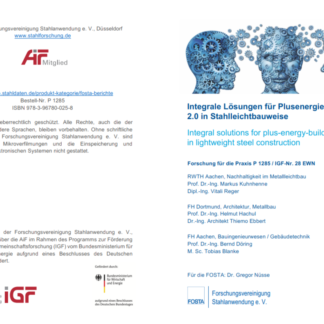Description
P 1285 – Integral solutions for plus-energy-buildings 2.0 in lightweight steel construction
The focus of research into the sustainability and energy efficiency of buildings has so far mostly been on residential and administrative buildings. Industrial and commercial buildings have received less attention. This building typology also falls under the Energy Efficiency Directive 2012/27/EU and must be operated in an energy-neutral manner in the future. However, these buildings offer a lot of potential for CO2 savings because they combine large volumes and surfaces with an efficient, industrialised construction method.
In this research project, a holistic approach to the planning and construction of commercial buildings is being developed with the aim of constructing grid-serving plusenergy buildings and providing corresponding planning recommendations. The possibilities of operating heating and cooling on the basis of renewable energy and generating both electrical and thermal energy on site are being investigated. Based on a comprehensive analysis of the building typology “commercial hall with office extension”, design guidelines are developed and a model building is planned. Steelbased components are developed for this, which are tested in the laboratory and in long-term trials to determine their performance and interaction in a building services concept.
Radiation-based surface heating and cooling elements using thermally activated trapezoidal profiles proved to be a sustainable solution for heat transfer to the room in terms of their performance, but also in terms of efficiency and for design reasons. The regenerative energy used for this can be obtained by means of the innovative steel energy piles investigated. Compared to conventional systems, clear advantages in terms of performance could be demonstrated. By means of the invisible and façade-integrated solar collectors that have been developed, a further regenerative source can be used. This can also be used to prevent overcooling or overheating of the ground. The investigated façade application of organic photovoltaics can help to increase the electricity yield of a classical silicium-based system on the roof. The project showed that the technologies described can be used efficiently and that plus-energy buildings in lightweight steel construction are possible.
Published in:
2021
Authors:
Prof. Dr.-Ing. M. Kuhnhenne, Dipl.-Ing. V. Reger, Prof. Dr.-Ing. H. Hachul,Prof. Dr.-Ing. Bernd Döring, M. Sc. T. Blanke




